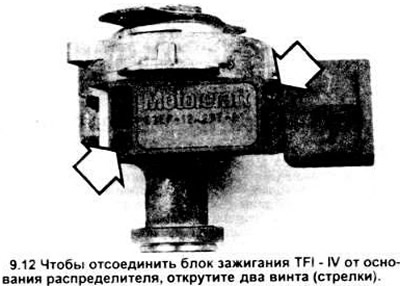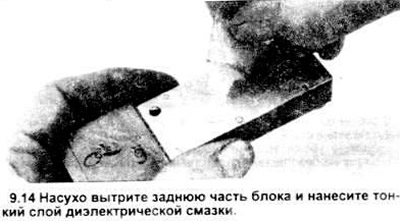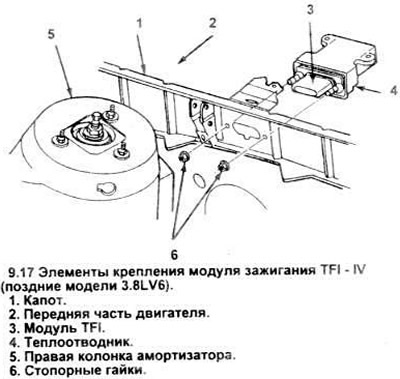Caution: The electronic ignition unit is very fragile. The following tests can only be carried out on properly selected equipment by a person who knows how to handle it. If you do not perform the operations carefully, step by step, you can easily damage the electronic unit / and / or other electronic devices, including the EEC - IV microprocessor itself
Examination
EEC - IV / TFI - IV
1. Remove the electrical connector from the ignition unit. Check for dirt, corrosion and/or damage, then reinsert.
2. Pull out the connector located directly above the connector of the ignition unit (see section 8).
3. Check the spark using a calibrated spark tester (see section 6).
4. If there is no spark, proceed to check the TFI module - IV distributor (paragraph 7).
5. If there is a spark, the cause is either in the final (common sensor) mileage / aging (IMS), or electronic control module (ECM) within the EEC - IV.
6. Remove the spark tester and disconnect the single connector. Distributor block TFI - IV.
Note: A new ignition unit must be purchased before starting this test.
7. If the module is mounted on a distributor, then the distributor must be removed (see section 8). Connect the distributor and motor with temporary contact.
8. Install a new block (see below) Connect case wiring to TFI - IV If the unit is mounted on a distributor, make sure the entire assembly is grounded. Rotate the distributor shaft by hand (distributor mounted block) or crank the engine (hood mounted unit), and check the sparking of the coil wire with an ignition tester (see section 6).
9. If there is a spark, then the old module is faulty. Leave the new module in place, install the distributor if it was removed (see section 8).
10. If there is no spark, then the sensor is damaged. Your old unit is fine and needs to be rebuilt or a new distributor installed.
Replacement
Block mounted on distributor (all models except late 3.8LV6 variants).
11. Remove the distributor from the engine (see section 8).
12. Loosen the two screws holding the block in place with a 1/4" deep 7/32" socket (see picture).

13. Pull the block down to disconnect its contacts from the stator contacts (see picture).

14. When installing an old or new block, clean its back surface and apply a thin layer of silicone dielectric grease to it (see picture).

15. Assembly is carried out in the reverse order.
Block mounted on the hood (late versions of 3.8LV6 engines).
16. Remove the screws securing the filter screen to the top of the hood.
17. In the engine compartment, separate the hood seal from the filter screen and hood panel next to the block assembly (see picture).

18. Lift and pull out the filter screen to provide access to the block assembly.
19. Disconnect the electrical connector from the module assembly.
20. Loosen the two nuts and remove the block assembly and heatsink.
21. Loosen the screws and separate the block from the heatsink.
22. Installation is carried out in the reverse order. Apply silicone dielectric grease to the metal back of the block before installing the block in the body diverter (see paragraph 14). When installing the heat sink and block, make sure that the heat sink fins point downwards.
Visitor comments